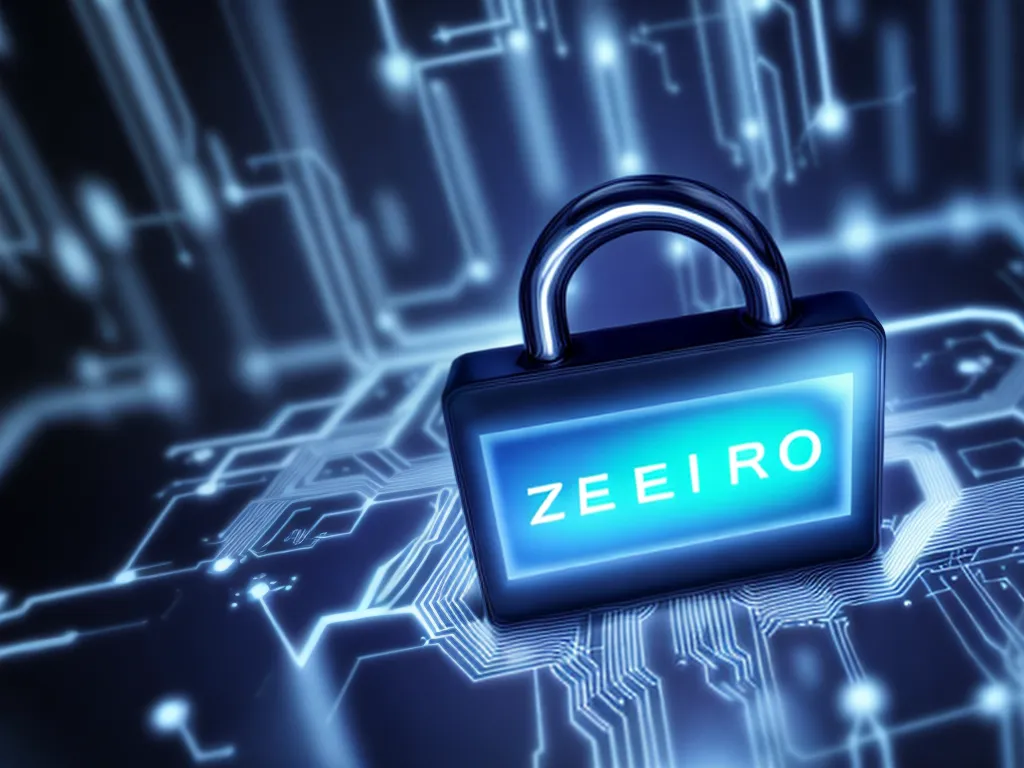
What is Zero Trust Security?
Zero trust is a security model that requires strict identity verification for every person and device trying to access resources on a private network, regardless of whether they are sitting within or outside of the network perimeter.
The zero trust model operates on the principle of “never trust, always verify”. This means that no users or machines are inherently trusted by default. Instead, entities are authenticated and authorized every time they request access to applications and data.
Core Principles of Zero Trust
- Least privilege access: Users are only given access to the specific resources they need to do their jobs and nothing more.
- Strict access controls: Access to resources is granted on a per-session basis. Authentication and authorization are required every time access is requested.
- Assume breach: The network should always be considered compromised. Strict controls prevent lateral movement across the network.
- Continuous security monitoring: All network traffic is inspected and analyzed to detect threats.
Why is Zero Trust Important?
Traditional network security operates on the assumption that everything within the network perimeter can be trusted. However, this approach has significant weaknesses in today’s IT environments:
- The perimeter is dissolving as more users, devices, and apps reside outside the network.
- Attackers can penetrate the perimeter through phishing, malware, or stolen credentials.
- Once inside, attackers can easily move laterally across the network.
Zero trust addresses these issues by:
- Treating all users with suspicion, regardless of location.
- Verifying identities and granting least privilege access.
- Inspecting all traffic to detect malicious activity.
- Preventing lateral movement across the network.
Zero trust minimizes damage if the perimeter is breached, since the network is segmented and tightly controlled.
Key Technologies and Concepts
Implementing zero trust utilizes several key technologies and concepts:
Multifactor Authentication (MFA)
MFA requires users to present two or more verification factors, such as:
- Something you know (password)
- Something you have (security token)
- Something you are (biometrics)
This provides stronger identity verification than usernames and passwords alone.
Microsegmentation
The network is divided into small, isolated segments. This prevents lateral movement across the network and limits access to only authorized resources. Granular access controls are applied at the segment level.
Least Privilege Access
Users are only authorized to access the specific resources, at the minimum level required for their role. Nothing more. This is achieved via role-based access controls and entitlement management.
Encryption
Traffic within and between microsegments is encrypted to prevent unauthorized access and inspection. This protects data at rest and in motion.
Continuous Monitoring
Network traffic is continuously analyzed to detect threats and anomalous behavior. Monitoring helps enforce security policies and identify potential incidents.
Implementing a Zero Trust Architecture
Transitioning to zero trust is a long-term strategic initiative. Key steps include:
Inventory Critical Assets
Document organization’s key applications, systems, resources and data. This provides visibility into what needs to be protected.
Develop Policies
Define formal access policies for who can access resources under what conditions. Policies guide zero trust implementation.
Segment the Network
Divide network into microsegments. Place sensitive systems in separate segments with strong boundaries.
Implement Controls
Deploy MFA, encrypt traffic, monitor activity, limit access, and manage entitlements. Apply controls at microsegment level.
Adopt Security Posture
Embrace zero trust philosophy across people, processes and technology. Promote concepts of least privilege and continual verification.
Challenges with Zero Trust Adoption
While zero trust offers enhanced security, it also introduces challenges:
- Significant upfront investment required to re-architect network and deploy new controls.
- Increased network complexity from microsegmentation and layered controls.
- Potential impact on user experience due to stringent access requirements.
- Difficulty integrating legacy systems and applications into model.
- Cultural shift required to transition from implicit trust to always verifying.
Adopting zero trust is a lengthy process requiring buy-in across the organization. But the improved security posture can make it worthwhile for security-focused enterprises.
The Future of Zero Trust Security
Zero trust is an evolving paradigm. As the model matures, future developments may include:
- Additional context around identities, such as user behavior analytics or threat intelligence, to strengthen access decisions.
- Automation of policy enforcement and response via artificial intelligence and machine learning.
- Extending zero trust principles to other areas of security, like cloud, DevOps, and OT environments.
- Advanced analytics to identify anomalies and predict emerging threats across distributed environments.
- Integrations with ecosystem partners to expand data sources for verification and improve threat awareness.
While early in its development, zero trust offers a path to enhanced security that accounts for modern IT environments and threats. Expect zero trust to continue gaining traction as organizations rethink outdated “trust but verify” models.












